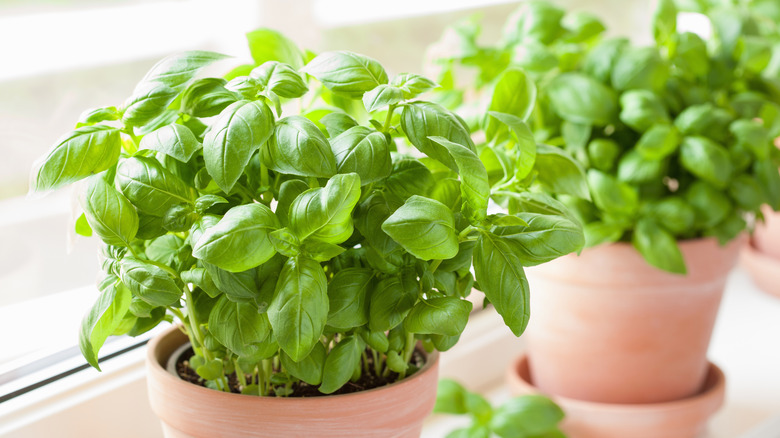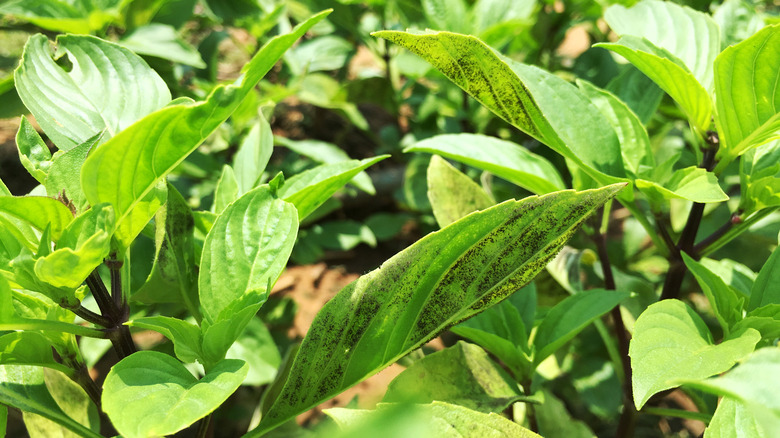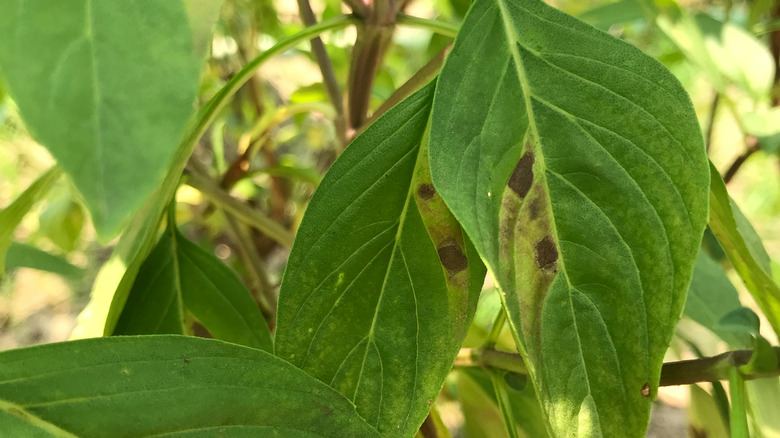Plant Rescue: What Downy Mildew On Basil Looks Like And How To Save It
Basil is more than a delicious store-bought herb for your favorite pasta recipe; it's also a lovely aromatic plant that can be grown outdoors or indoors. So whether you grow it just to keep it around for its beautiful foliage and aroma or to add fresh to dishes, basil is a great plant to add to your indoor kitchen garden or patio garden.
According to the Clemson Cooperative Extension Home and Garden Information Center, basil is among the easiest herbs to grow. All it needs is plenty of bright, direct sun, well-draining soil, and occasional fertilization and deadheading. However, while it isn't as susceptible to diseases as other herbs and plants, it isn't invulnerable. Therefore, keeping an eye out for diseases in your basil plant is essential since you must ensure it remains food-grade. One potential disease your basil plant may be afflicted with is downy mildew. Keep reading to learn how to identify downy mildew on your basil plant, as well as how to treat it.
How to tell if your basil has downy mildew
Unlike powdery mildew, which is easier to identify because of its fine white texture, downy mildew is a bit more discreet. According to University of Minnesota Extension, downy mildew is a water mold, which makes it a vastly different identification and treatment process than other diseases since most plant ailments are fungal.
This does, however, make downy mildew a little easier to identify. Per the Royal Horticultural Society, this disease can appear on the bottom of leaves as a moldy growth in shades of purple, gray, or white. The basil leaves may also discolor, turning brown or yellow, if not simply becoming paler. Leaves may also start to shrivel or drop.
Downy mildew spreads through the air. Luckily, it usually only spreads within the same plant species. However, since it's a mold, that likely means your plant is in an unduly wet or moist environment, which could lead to it developing on other plants regardless of wind conditions.
How to get rid of downy mildew
According to the University of Massachusetts Amherst, commercial fungicides are ineffective against downy mildew, and when they do work, it's usually in a preventative setting. However, they also note that many downy mildew strains resist potent fungicides. As such, your best bet is often to resort to non-chemical treatment.
Unfortunately, the proper treatment for downy mildew is to throw out the affected basil plant. And not just the plant — you'll need to throw out the soil if it's in a garden bed, as well as immediately surrounding plants. If it's in a pot, you can toss the plant, dirt, and any plants directly next to it. However, don't forget to thoroughly disinfect the pot before reusing it. While the Royal Horticultural Society says you can cut the leaves off mildly affected plants, since basil is a crop, you shouldn't take any chances.
The best treatment for downy mildew on basil is prevention. Keep humidity below 85% at all times. You should also ensure you're watering from the base and not on the leaves. If your basil plants are in a garden bed or the ground, give them plenty of space to have more room for air circulation, as this may help reduce overly humid conditions.


